While broadly compared to Apple TV, Google's new Chromecast product and the WebRTC protocol behind it aren't really comparable to Apple's AirPlay, the wireless video feature that is the main reason people are buying and using Apple TV.
Chromecast is a small, $35 embedded device that plugs into an HDTV's HDMI port and into a USB power adapter. It bundles three months of Netflix service into its price, making it really close to being free. (Update: Google has since dropped the Netflix offer after shipping a reported 200 thousand units, stating that it ran out of promo codes.)
Google's new direction with the device represents a major shift in the search engine's strategy for conquering the living room television market. It targets a much lower price point, undercutting even the $99 Apple TV, in an Android-like effort to build an audience of users that it hopes to later monetize, sacrificing any profit aspirations along the way.
Google shelves Android TV, Andy Rubin
According to a report by the Wall Street Journal, Google had initially developed a more sophisticated, Android-based set top box under the direction of Andy Rubin last winter.
That product was said to be oriented around Google's Hangouts video conferencing feature, with the hardware itself including a camera and motion sensor similar to Microsoft's Xbox Kinect.
The prototype device, which Google reportedly demonstrated in private this January at the Consumer Electronics Show in Las Vegas, was also intended to play Android games and other custom apps. It was supposed to be ready in time for Google's IO conference this summer.
However, wary about launching another expensive dud after the failure of the Nexus Q last year, the miserable launch of Android 3.0 Honeycomb tablets in 2011 and the flop of Google TV in 2010, Google put Rubin's Android TV box on ice.
In March, Google's chief executive Larry Page posted a blog entry saying Rubin had "decided it's time to hand over the reins and start a new chapter at Google."
With Rubin out as the head of Android, Page appointed Sundar Pichai, who had previously worked on the Chrome browser, in his place. Four months later, Google is now showing Chromecast, a dongle device based on Chrome OS (in other words Linux), albeit missing the fancy camera, sensors and support for Android apps. It only steams video from the web.
Aimed at AirPlay, but only achieving Roku
Chromecast takes indirect aim at AirPlay, a feature that a report by Frost & Sullivan described as "the primary reason for purchase of Apple TV devices."
But rather than duplicating AirPlay, or backing one of the rival standards that have been pushed by other members of the industry, including the Wi-Fi Alliance Miracast protocol or the Sony-backed Digital Living Network Alliance (DLNA) standard, Google's new dongle is designed to play content directly from the Internet, just like the distantly second place Roku streaming set top box starting at $49 or Google's DOA $299 Nexus Q from last year, albeit at a much lower price.
This is not Apple TV
Google's product shift follows the trajectory of Apple's own TV transition, which began in 2007 with an Apple TV that initially was essentially a low end Mac designed to play content from its internal hard drive. The $299 device didn't attract much attention as a simple relay of iTunes content, however.
In 2010, Apple scaled its TV device down to a $99 price point, using an embedded ARM chip running iOS and ditching expensive local disk storage. The new device also gained the ability to play content from Netflix and other services.
However, the product really started to get attention with the release of AirPlay, a feature that extended Apple's previous AirTunes feature (for wirelessly distributing audio from iTunes to AirPort Express base stations connected to stereo speakers) into the realm of video.
Apple rapidly rolled out AirPlay support for iTunes, then iOS devices, enabling mobile users to wirelessly stream content from their device over WiFi for output on an Apple TV-connected display. Apple later added support for AirPlay Mirroring, which presented the entire screen of an iOS device or Mac any nearby HDTV outfitted with an Apple TV.
AirPlay also supports custom app development that enables users to play games that use an iOS device as a motion enabled controller (above) or take advantage of multiple screens (below), effectively making AirPlay a wireless HDMI output that can find nearby Apple TVs and "plug in" for remote playback over the fast local WiFi network.
For OS X Mavericks, AirPlay will gain the additional ability to turn an Apple TV-connected display into a wirelessly attached, fully functional display as part of the desktop (below).
In contrast, apps for iOS or Android that are designed to support Chromecast simply forward links to static content on the Internet, which are then queued up on the Chromecast device for playback directly from YouTube, Google Play or Netflix servers "in the cloud," as Google depicts on its Cast developer site. This is how Apple TV or Roku play Netflix or YouTube content; it requires that users have a fast, external Internet connection.
As Pichai, now Google’s SVP of Android, Chrome and Apps, told the Wall Street Journal "All Things Digital" blog, "effectively, the Chromecast is a Web media player. Once you say, 'Play this YouTube video or Netflix video,' it is actually pinging YouTube or Netflix over Wi-Fi, going through the Internet backbone, and they are just sending it like they would send it to a browser."
But Chromecast is not designed relay games or Keynote presentations the way AirPlay does, or to mirror the primary or secondary screen of a device the way AirPlay Mirroring does, or to add an HDTV as an additional desktop monitor as OS X Mavericks will. This renders Chromecast a closer kin to the $49 Roku box, albeit lacking Roku's IR remote control and support for other services like Amazon Video, Vudu, and Hulu Plus.
It also necessitates that content streamed to Chromecast have a fast internet connection. You can't relay movies stored on your smartphone or PC through the dongle to your TV over local WiFi. So if you're off the grid in a ski cabin or dealing with external bandwidth limitations (such as when using a cellphone tether as your uplink), Chromecast won't help.
This is WebRTC, an effort to promote WebM/VP8
However, Chromecast can (in a currently beta form) mirror content from a web page appearing within a Chrome web browser. This uses Google's WebRTC protocol for real time video conferencing. Essentially, when you "cast" a web page from Chrome to the device, it sets up a "video chat" that shares what's on the page to the dongle. "Video plays with only a bit of chop and stutter, and lips don't quite sync up with the audio, which could be maddening for some." - The Verge
"It's not particularly impressive yet," Sean Hollister wrote for the The Verge, noting that when "casting" from Chrome, "scrolling doesn't come close to keeping up with your finger, and there's visible compression artifacts whenever there's rapid motion: it's a lot like streaming game services like OnLive and Gaikai, but with a lot more delay."
Hollister charitably added, "Video plays with only a bit of chop and stutter, and lips don't quite sync up with the audio, which could be maddening for some."
Chromecast's Chrome casting supports MKV pirated videos (if they have AAC audio, but not if they they use AC3 Dolby Digital or DTS audio) and web content in Adobe Flash, but does not support QuickTime videos or Microsoft Silverlight content on the web.
WebRTC is a vehicle for pushing Google's VP8 and its VP9 successor, the video codecs supporting its WebM initiative. Google has been trying to establish WebM as an ostensibly free and open alternative to H.264, but adoption has been minimal over the past few years.
WebM is also now subject to patent licensing, giving it no significant advantage over H.264 while remaining technically inferior in many respects. Nokia isn't participating in the licensing pool, so WebM also faces ongoing patent infringement claims from at least one major H.264 IP owner.
FU, TV!
In addition to trying to find an application for WebM, Chromecast also appears to be attempting an end run around the content creators that rejected and blocked Google TV three years ago. By using web technologies to forward web content to an embedded browser plugged into your TV, it appears Google hopes to bypass the restrictions broadcasters put in place to separate the web and TV markets.
While Apple, Roku, Microsoft and others have worked with TV broadcasters and producers to bring their content to the TV via the internet legally, Google has historically sought to simply scrape free TV off the web and put it on users' televisions, next to its own ads, while also overlooking the widespread piracy of TV programming by Google TV users.
Many users don't understand why this is even an issue, but broadcasters have signed exclusive deals with cable companies and networks that prevent them from allowing web users to mirror to TV the content they separately make available on the web, often for free.
Just like print journalists, TV producers don't want Google appropriating their content and simply syphoning off its own advertising revenues. Unlike print journalists, TV producers still have some control over their content and don't want to end up like the devastated newspapers Google obliterated with its Internet ads over the last decade.
Peter Kafka, also writing for "All Things Digital," noted that broadcasters may simply greet Chromecast's WebRTC "bypass-casting" trick with the same cold shoulder that knocked down Google TV at its launch, by simply blocking their content from appearing in Chrome, bypassing Google's bypass.
Google TV, take one
Google might to well to review its history. Three years after the launch of the original Apple TV, Google suffered an embarrassing failure with its own Google TV (below) in trying to bring its open Android platform (albeit without the open source part) to the living room via third party devices from Sony, Logitech and others.
TV content companies took a particularly dim view of the product, seeing it as an attempt by Google to take their content and pair it with the search engine's own advertising services, the same business model Google had applied to online journalism at the expense of original news sources.
Google TV was also simply a weak product. Nilay Patel, writing for Engadget, described it as "an incomplete jumble of good ideas only half-realized, an unoptimized box of possibility that suffers under the weight of its own ambition and seemingly rushed holiday deadline."
At the end of 2011, Google's chairman Eric Schmidt predicted that Google TV would appear on "the majority" of new TVs by the summer 2012. Instead, Google was sent back to the drawing board and returned with its own hardware designed to show hardware makers how to do it right, following the pattern of Microsoft's Zune.
Take Nexus Q, please!
Google returned to the market last year with the Nexus Q, a $299 sphere designed to directly stream content over the Internet. It was intended to support remote control functions from an Android device via WiFi or Bluetooth, but unlike Apple TV, it couldn't stream any content from local devices.
Instead, an Android smartphone or tablet was used to simply queue up content for playback directly from Google Play or YouTube, with no support for Netflix, Hulu Plus, HBO or other services.
Writing for the New York Times, David Pogue observed, "Google must have bigger plans for this thing. It’s wildly overbuilt for its incredibly limited functions, and far too expensive. For now, I can think of only one class of customer who should consider buying the black Nexus Q sphere: people whose living rooms are dominated by bowling-ball collections."
After the Nexus Q flopped before even being officially launched, Google decided by the end of 2012 to sell off its Motorola subsidiary's TV set-top box business that pundits originally claimed would empower Google TV with a rich background of TV experience.
The fate of Rubin's Hangouts-oriented video conferencing game console was also in a precarious position, one that ultimately didn't survive the next quarter. Unaware of what Google's Android team had really been working on, the platform's fans were excited to see a slightly cheaper version of a generic Roku box on sale, and promptly sold out the small number of Chromecast dongles Google had manufactured.
So many rival AirPlay standards to choose from
Today's Chromecast does the same thing as the Nexus Q, but at a giveaway price that Google hopes will build a audience of beta testers for its WebRTC based web browser mirroring. At the same time, Google also plans to separately continue supporting its partner's efforts Google TV, as well as rumored work on new video game hardware capable of running Android games on TV.
Adding up the cost of these three products, Google's alternatives to Apple TV will add up to a much higher combined price tag.Adding up the cost of these three products, Google's alternatives to Apple TV will add up to a much higher combined price tag.
Additionally, in parallel to Chromecast's WebRTC based browser relay, Google is adding support for Miracast in new versions of Android 4.3 and Google TV. Miracast is the same direct competitor to AirPlay that Microsoft is also backing in Windows 8.1. However, Chromecast doesn't support Miracast (or Sony's DLNA), both of which require substantially more powerful hardware than it has.
This means early adopters of the cheap Chromecast will gain a very limited functionality that essentially duplicates low end Roku boxes and the Smart TV features already part of many modern HDTVs, without gaining forward-looking support for true AirPlay-like features that Google is separately adding to new Android devices.
This may likely make Chromecast a distraction that takes away momentum from Miracast or DLNA, leaving Apple the only vendor with a top to bottom streaming solution that works across all its devices and costs very little to implement.
 Daniel Eran Dilger
Daniel Eran Dilger

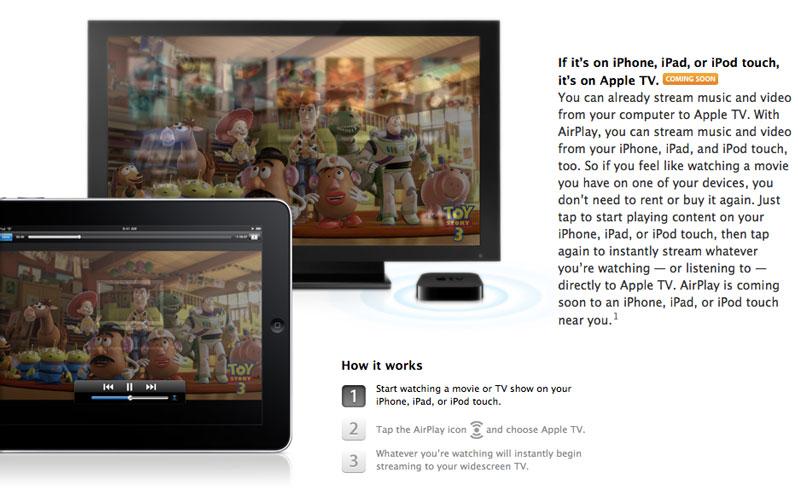
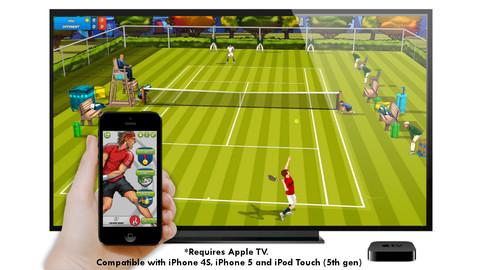
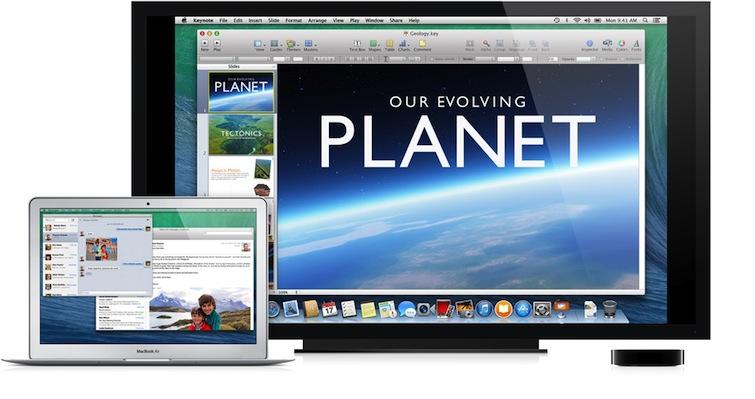
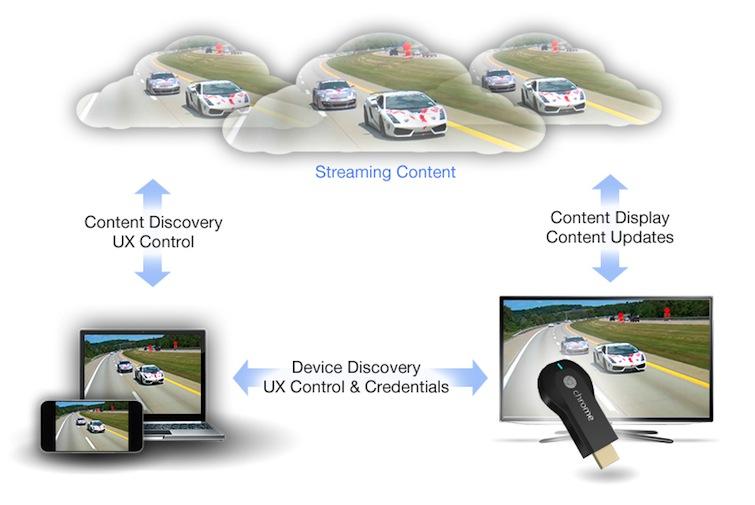
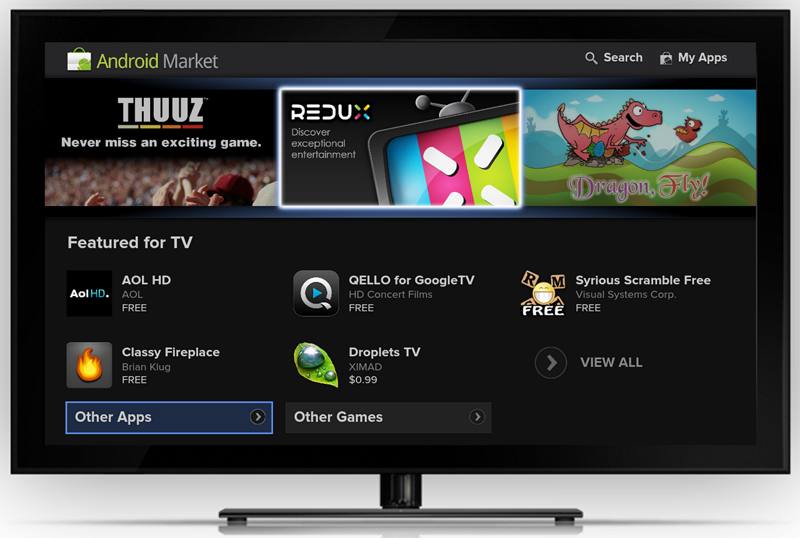
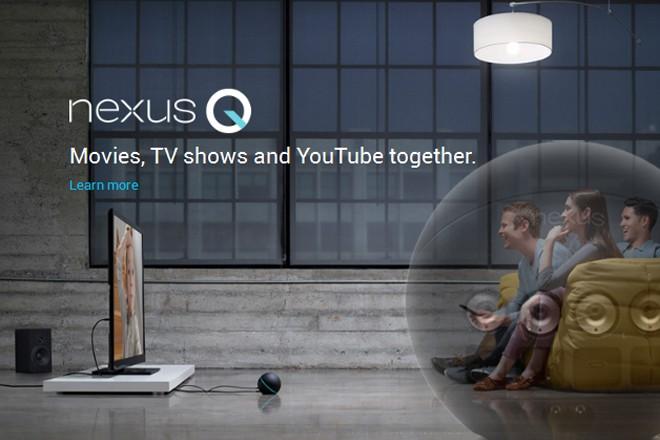







-m.jpg)






 Marko Zivkovic
Marko Zivkovic
 Christine McKee
Christine McKee
 Andrew Orr
Andrew Orr
 Andrew O'Hara
Andrew O'Hara
 William Gallagher
William Gallagher

 Mike Wuerthele
Mike Wuerthele
 Bon Adamson
Bon Adamson




-m.jpg)



148 Comments
I just bought an Apple TV a couple of weeks ago, and this chromestick is nothing like an Apple TV. The Apple TV is super smooth and has an elegant interface. I was watching some Netflix content on it, and it was very high quality. So, this POS chromestick stutters and has choppy playback and out of sync audio?:D I guess that it will appeal to Fandroids and other cheapskates who do not have very high standards. :rolleyes: If this thing stutters and lags like it said in the article, then it is not even worth $35 bucks, it's not even worth $5. I'm going out to get some lunch soon, I guess that I could go hunt for food in some trash bins, that'll save me a few bucks, but I think that I'll go to a restaurant instead.:D
There is a lot of misinformation about this Google product all over the net. It's because people know about Apple Airplay and assume this Google thing is the same but cheaper. There is only streaming content from the web, but I wonder if what happened to Google TV might happen to Chromecast; the content providers shut it down. I buy AppleTV because of the mirroring, and ability to stream content on my disk, and the content Apple provides. Google could provide such hardware, but they won't because they are a cloud company. And they want people to gush over how cheap they can provide their hardware compared to the competition (Apple); the same with the Nexus 7 and what Amazon does with their Kindle Fire.
I agree, the Apple TV units is a very good product, However, in the UK, you cant receive Iplayer, ITV Player, 4OD or 5 on Demand I am aware that these can be mirrored by using an ipad or phone, but sometimes this is not an option Until Apple allow streaming of UK channels, people will always look for options, including Jail Breaking. Even ive tried this, without success.
It's not a Roku either. I'm able to stream all my movies, music, pics, and whatever else I want with my Roku... So what you can stream from an iOS or Android device. That's lame...
I will definitely buy it if it will cost like 135 $ less (they will give me 100 bucks bonus with Chromecast for free) so I can just throw it out of window for free and buy an Apple TV instead. And seriously Android fans got pretty confident on these I just saw an article titled: [B]"Chromecast will disrupt the living room; Apple TV and Air play don't stand a chance."[/B]